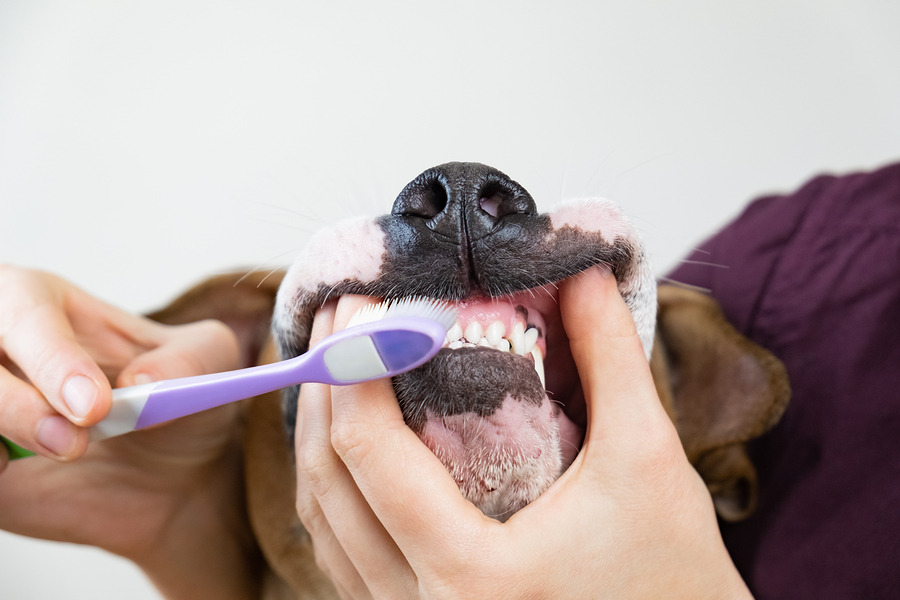How often do you brush your dog’s teeth?
Following a recent visit to the vets with my canine companion, it was suggested that I start a programme of regularly brushing my dog’s teeth. I was a little taken aback as I had never contemplated performing that particular task with my dog at home before but I was assured that it was common practice and really I should have been brushing my pooch’s teeth since puppyhood…who knew?
Well, I obviously didn’t, but am I the only one? So I decided to do a little digging – excuse the pun!
According to the RSPCA, dental disease is very common in dogs, second only to ear infections and can be extremely uncomfortable so they advise we check and clean our dog’s teeth regularly.
Just like people dogs need to have healthy gums and teeth. Brushing our dog’s teeth is an important part of overall care. Keeping our dog’s breath fresh is just one reason to brush regularly, as clean teeth can also boost the health, happiness and longevity of our canine friends. Plaque and tartar, along with bad breath, can result in loss of teeth so following a regular routine of brushing our dog’s teeth may help to improve its quality of life and may help to avoid expensive treatment costs too.
How often should I brush?
It is recommended to brush your dog’s teeth at home at least two to three times per week and take your dog for professional dental cleaning once a year.
How do I start?
The RSPCA suggest that we start teeth cleaning when our dog is a puppy and we should brush their teeth every day to get them used to it. However, if like me, you have never done this before then here are some tips on how to go about it:
- You will need to buy a dog toothpaste as the brand in your bathroom cabinet will not be suitable and also a special dog toothbrush that goes over your finger (but a child-sized toothbrush could work just as well)
- Start by having your finger near their mouth, then try massaging your dog’s lips in slow circular movements for up to 1 minute once or twice a day. Gradually build up until you are massaging your dog’s teeth and gums in the same way until your pet is comfortable with this.
- Once your dog is happy with you massaging his teeth you can introduce the dog toothpaste. Put a pea-sized amount of toothpaste on one of your fingers and let him taste it then immediately reward with a treat. Over a few days, increase the amount of time between your pet tasting the toothpaste and being rewarded.
- You can then introduce the toothbrush. Put a small amount of toothpaste on the brush and let your dog lick it. Immediately reward him and then again do this for several days, increasing the time between licking and reward.
- When you and your pet are ready to brush then start brushing in one area of your dog’s mouth. Gently lift the lip and clean the outside of the teeth and gumline. Make quick, smooth, circular movements and keep talking to your dog throughout.
- Your dog probably won’t appreciate you cleaning his entire mouth at once so stop every 5-10 seconds and give your dog lots of praise.
It should take between 30 seconds to 1 minute to brush your dog’s teeth in total. Remember the key is to keep the session light and fun for your dog.
Dental chews and treats
Some dogs, no matter what you do, will not let you brush their teeth so dental chews and toys are a good alternative. They can help wipe away soft tartar and massage the gums and are also good at relieving boredom too.
It is worth speaking to your vet if you are unsure which teeth-brushing alternative to try and of course they are there to advise on all your pet’s needs.
So, I’m off to buy my doggy toothbrush and toothpaste and have a go at brushing my unsuspecting pooch’s teeth – wish me luck!
Do you brush your dog’s teeth regularly or do you use dental chews or toys instead? Or have you never brushed your dog’s teeth?





















